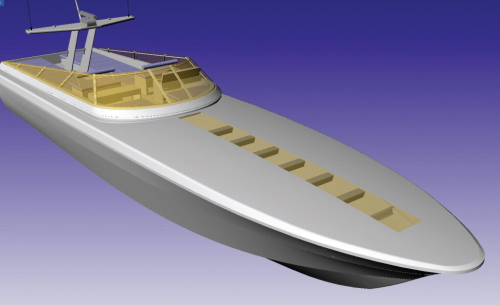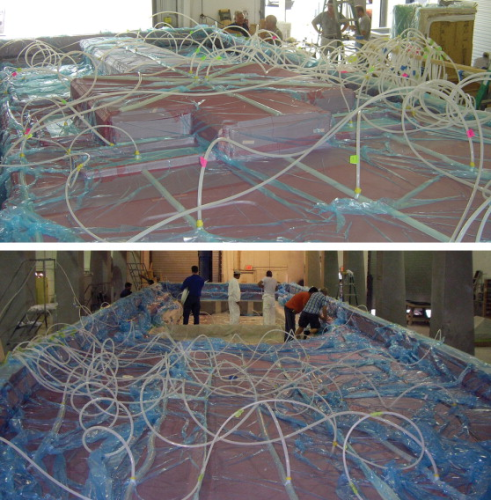

Design and styling classier than an Armani suit. Construction tougher than a suit of armour. Snob factor off the scale, like a Rolls-Royce. So wrote Mike Smith of Boating Magazine about Magnum Marine. Founded in 1966 by Don Aronow, later sold to Italian boat builder Filippo Theodoli and his wife Katrin, the company is an American legend – with vessels prized for their classy looks, seaworthiness and performance. The boats are popular with private clients as well as with the US military, navy and numerous foreign government agencies.
All Magnum models are built according to Registro Italiano Navale (RINA), European CE certification and American Bureau of Shipping (ABS) regulations and are of fibre reinforced plastic (FRP) construction with watertight bulkheads and a deep-V for high performance in adverse conditions. Hulls and structural components are designed to provide exceptional strength and durability in rough seas. Construction is typically E-glass, aramid or carbon, depending on requirements. In this build, carbon was used for the deck and liner.
Collaboration – the key to success
Any project's success depends on collaboration; this is particularly evident in the recent custom-building of a Magnum 70. Taking the original styling by Lazzarini & Pickering, Magnum developed the vessel for an offshore client who was looking for a more performance-oriented design and construction. To coordinate this, David Powys, Magnum Project Manager, was brought in to oversee the project. Powys, recognising the need to partner with suppliers, utilised distributor Composites One, Vectorply, a manufacturer and distributor of composite reinforcements fabrics, and SP, the marine business of Gurit, to undertake the custom one-off deck and liner.
Initially, temporary female moulds were CNC-machined for single use from the design files. ATC T-27 tooling resin was used for the substrate. The surface was sealed and vacuum tests were then performed prior to bagging. The tool required little or no moving and was infused at the CNC mill location. Following the successful vacuum check, the dry carbon and Corecell™ styrene acrylonitrile (SAN) foam core material were installed.
Composites One ran the infusion while SP supplied materials, which included Corecell structural foam and PRIME 20LV Infusion Epoxy. SP personnel also set up the resin mixing station and resin and hardener were pre-metered for the infusion.
The tight weave of carbon fibre tends to inhibit flow of resin. Vectorply micromesh carbon was used to help increase flow without adding significant weight. Infusion tests were performed to determine flow rate and assist with the number and positioning of the flow lines.
Using SP's Prime 20LV lends itself to longer gel times for larger projects and hardeners can be mixed for custom gel times. In this case, Slow hardener had the appropriate gel time and was used initially. A mixture of Slow and Extra Slow hardener was used towards the end of the process when resin was not moving as quickly. Feed hoses were set up in multiple zones to allow for a staged flow plan. These zones were served by labelled hoses that could be monitored for flow.
The flow medium was a mixture of the Corecell foam and mesh on top of the laminate. Corecell foam utilises knife-cut kerfs that are small in section. These kerfs allow the resin to flow, but because of their small section use less resin, thus saving weight and money. Vacuum lines were placed around the perimeter of the part and run to pressure pots. Two 30 gallon reservoirs were used on either side of the part to feed mixed resin. Material was then mixed as needed.
The deck beams and structure were wet laminated and vacuum consolidated using SP's Ampreg 22 resin, SP Spabond adhesives and Vectorply reinforcements. While the main deck took around one week to load the dry laminate, it wet out in approximately 110 minutes. The result is a high quality laminate with low void content with a final weight of 800 kg.
Simple elegance, complex solutions
The custom-built Magnum 70 was launched in early February 2009, after which sea trials were successfully conducted. It is currently being shipped to its owner in the Mediterranean. The elegant interior styling by architects and designers have created a minimal, elegant look – one that belies the complex range of solutions hidden elsewhere in the vessel. The result is a comfortable day boat that still manages to reach a maximum speed of 65 mph.





